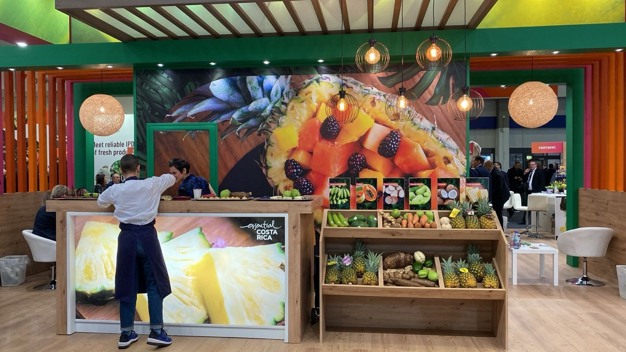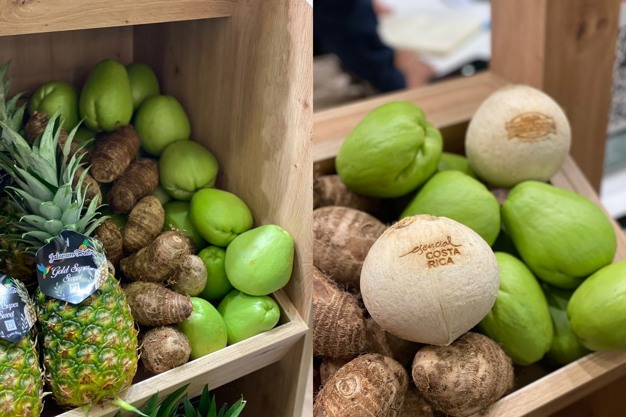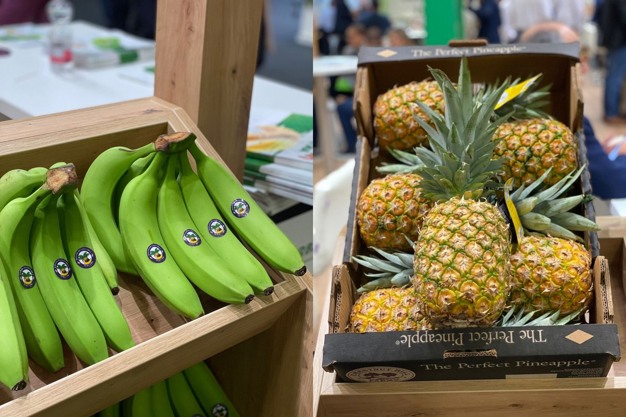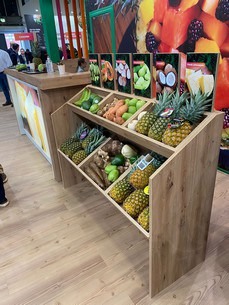The agricultural sector remains one of the main sources of exports for Costa Rica, accounting for 18% of total international shipments in 2024; 7% more than in 2023. However, global market dynamics pose challenges in terms of logistics, costs, regulation, and consumption, which Costa Rican exporters must face to remain competitive.
According to Mario Sáenz, export development manager at the Costa Rican Foreign Trade Promotion Agency (Procomer), some of the most important products in this sector are pineapple (37%), bananas (33%,) and coffee (10%), while others such as cassava, chayote, coriander, melon, watermelon, and ornamental plants have recorded sustained growth in recent years.

The market and consumer behavior
Consumer preferences are evolving, with a growing demand for fresh, sustainable, and traceable products. In both the United States and Europe, buyers are looking for certified fruit and vegetables, making labels such as GlobalGAP and Fair Trade an essential requirement for accessing these markets.
Supply and demand are also shaped by other factors, in addition to sustainability. On the one hand, exotic and tropical fruits are booming, especially in Asia and the Middle East. Products such as papaya, pineapple, and passion fruit are attracting the interest of buyers, offering growth opportunities for Costa Rica in these emerging markets.

On the other hand, the growing consumption of ready-to-eat products has spurred innovation in packaging and preservation. This has led some Costa Rican exporters to bet on minimally processed products, such as cut or frozen fruits, which respond to the modern consumer's demand for convenience.
These changes have led Costa Rican exporters to diversify their supply and explore non-traditional markets to reduce dependence on destinations such as the United States and the European Union.
Constraints in logistics and production
The growth in demand has entailed some difficulties. Exporters have had to contend with rising logistical costs and challenges in maritime transport, impacted by global factors such as the drought in the Panama Canal and disruptions at major ports.
Moreover, sanitary and phytosanitary regulations remain a critical issue. Each destination sets some traceability and pest control rules, forcing producers to invest heavily in certifications and technology to ensure compliance.

Climate change is also having an impact on the production. Strategic crops such as bananas and pineapples have been hit by prolonged droughts and extreme rains, which have resulted in fluctuations in the supply and pressure on prices. "The Costa Rican agricultural sector has shown resilience, but climate variability remains an unpredictable factor," says Sáenz.
There's also growing competition in traditional markets. Several countries have increased their share of tropical fruit exports, forcing Costa Rican producers to differentiate themselves through quality, traceability, and compliance with demanding certification standards.
Emerging markets and new export models
While the United States and Europe remain the main destinations for Costa Rican agricultural products, the sector has sought diversification in Asia and the Middle East. In countries such as China, Japan, and the United Arab Emirates, the demand for tropical and certified products has grown significantly, generating opportunities for exporters. At the same time, the development of value-added products, such as frozen fruits, natural juices, and healthy snacks, has opened up new possibilities to make the activity more profitable and attract consumers with different buying habits.
At the same time, the development of value-added products, such as frozen fruits, natural juices, and healthy snacks, has opened up new possibilities to make the activity more profitable and attract consumers with different buying habits.
The use of technology is also transforming the way Costa Rica manages its exports. The digitization of traceability and the use of smart platforms to optimize logistics have become tools to improve competitiveness.
In terms of environmental regulations, compliance with the European Green Pact will be a decisive factor in maintaining access to the EU market in the coming years. "Sustainability policies are not an option, but a necessity to remain a global player," says Sáenz.
Prospects for the sector in the coming years
While the demands of developed markets are oriented toward products with environmental certifications and social responsibility, exporters must find a balance between sustainability, operational efficiency, and competitive pricing.
"The challenge is to innovate and adapt without losing sight of our identity: quality, sustainability, and social responsibility," says Sáenz.
The challenge for the sector in the coming years will be to diversify its markets, optimize its logistics costs, and improve its range of differentiated products to remain relevant in an increasingly demanding global scenario.
 For more information:
For more information:
Procomer
Tel.: (+506) 2505 4700
[email protected]
www.procomer.com










